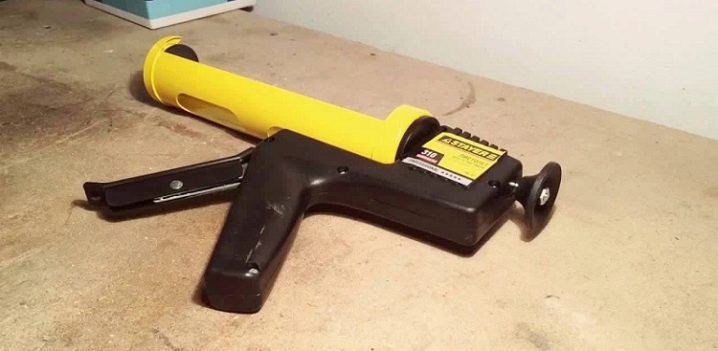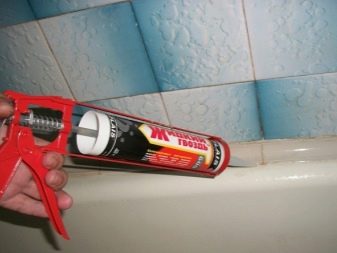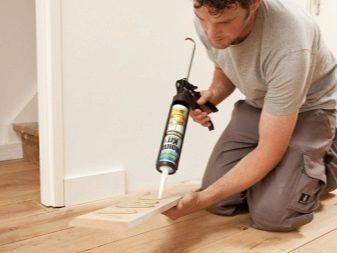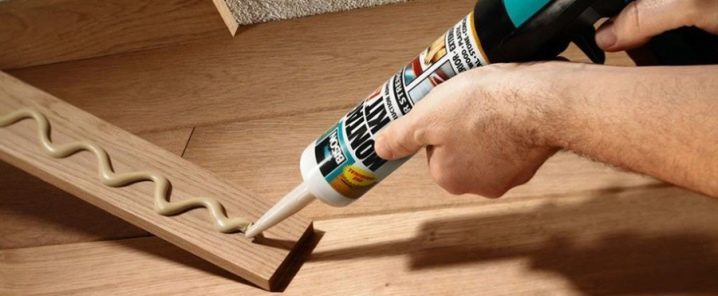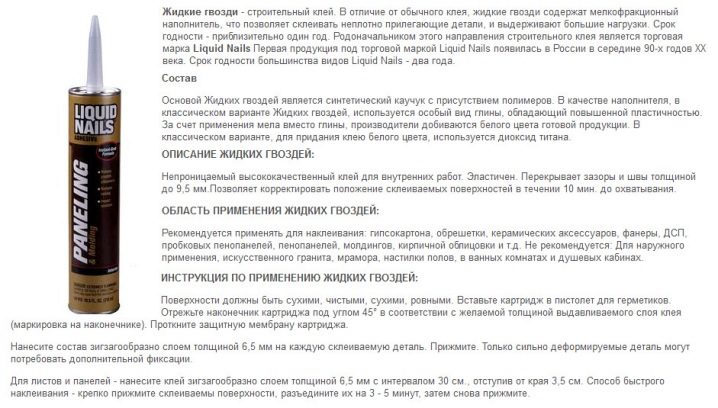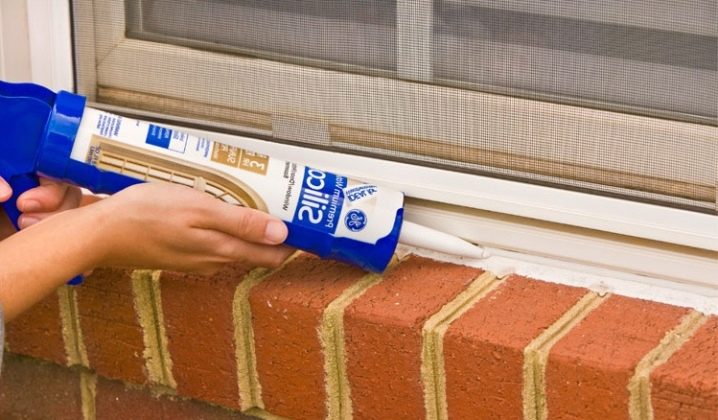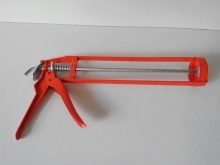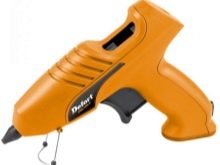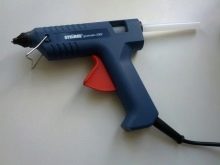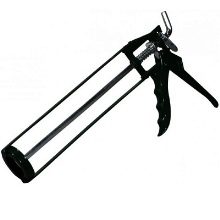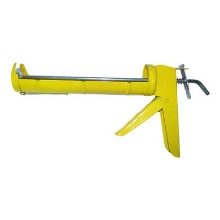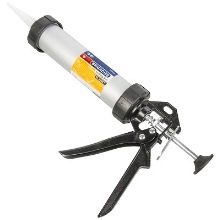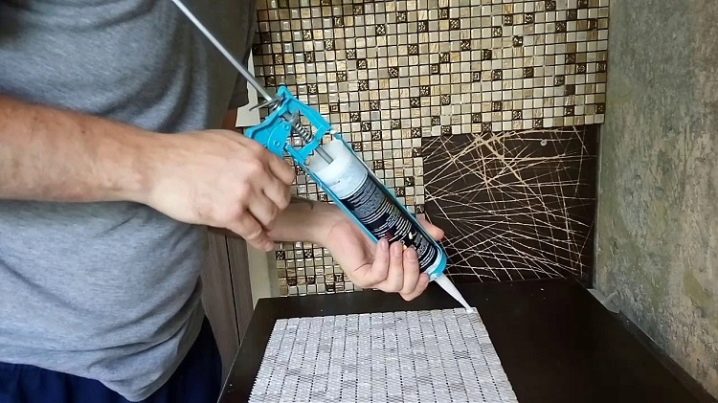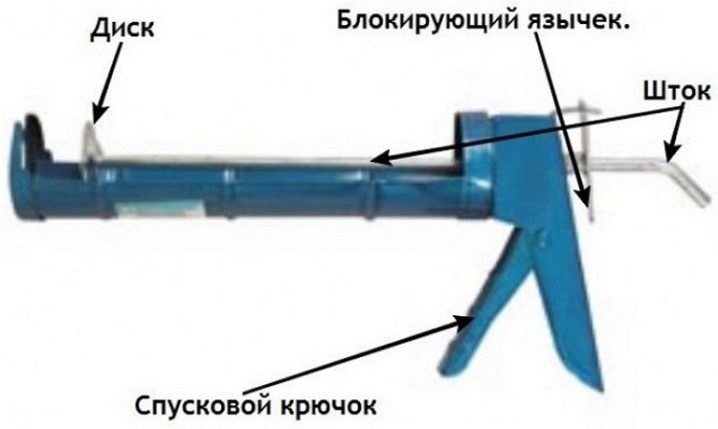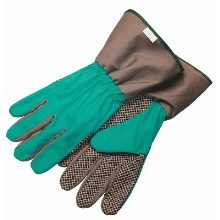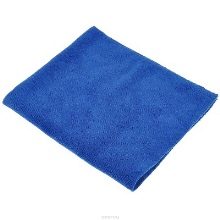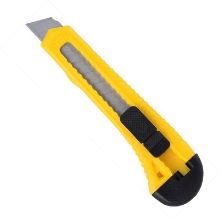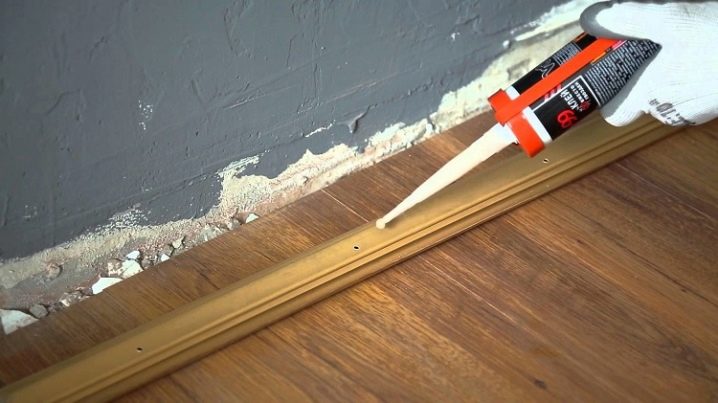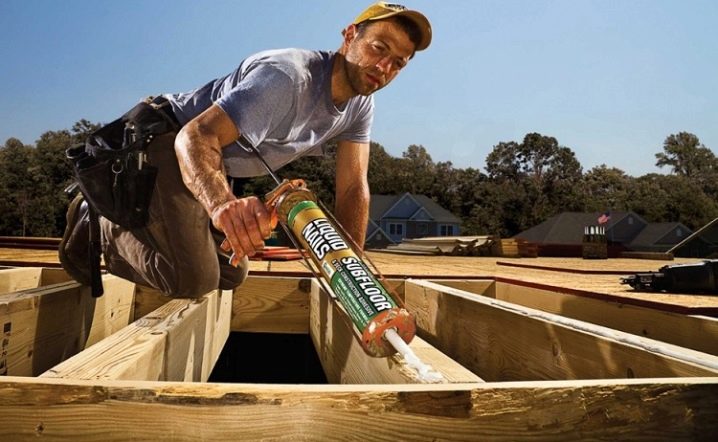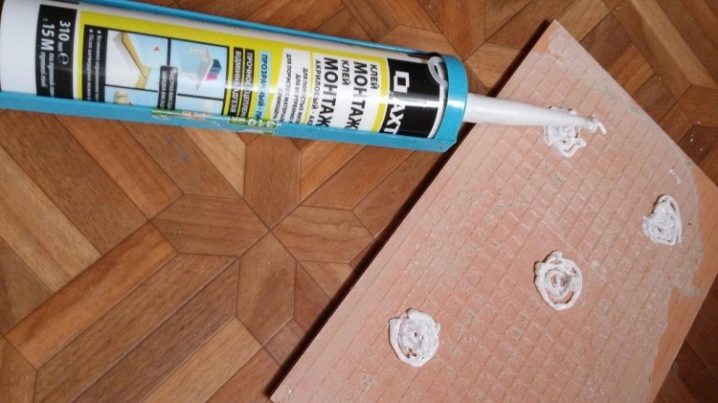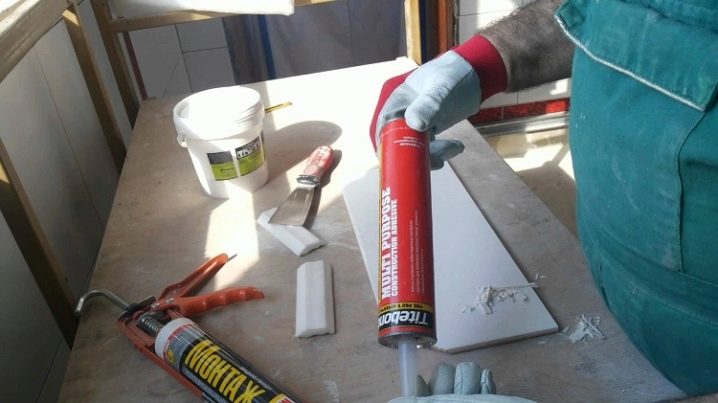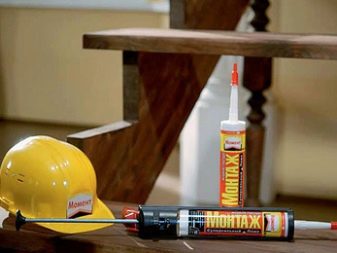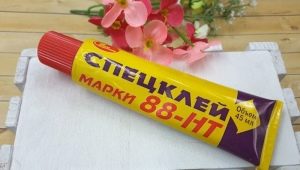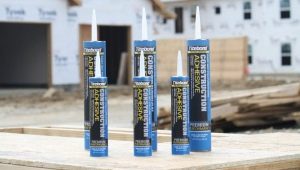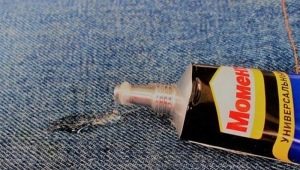Choosing a gun for liquid nails
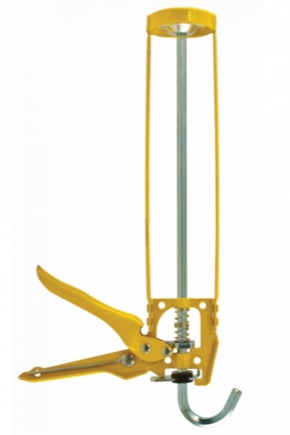
For applying to the bonding surface of such an adhesive, such as liquid nails, a gun is used. Consider what are the varieties of this tool, what to look for when choosing.
Liquid nails: what is it, what to apply?
Liquid nails are used in construction and repair since the 70s of the last century. They are respected both among professionals and in everyday life, and all thanks to their secure fit.
The substance that will be discussed is a construction glue with a very strong mount. It differs from the usual mounting adhesive non-standard composition. In addition to synthetic rubber and polymers, liquid nails contain fine abrasive grains, which give the bond strength, comparable to using ordinary nails.
Liquid nails provide high-quality and durable bonding even of those materials that are not amenable to conventional construction glue.
With their help, you can glue:
- drywall;
- ceramics;
- tree;
- glass;
- concrete;
- stone and so on.
With this composition, the materials are connected tightly, while the seams are not affected by high temperature, moisture, and rust does not appear. The strength of the composition of liquid nails is higher than that of PVA glue ten times. The speed of drying allows not to hold the glued surfaces for a long time.
The composition of liquid nails may differ by the main component. They may be:
- synthetic rubber;
- acrylate latex.
When using the first option, be sure to wear a respirator and gloves, as it can be dangerous when it comes into contact with the skin. The second option is harmless, it is recommended to use it in rooms protected from moisture.
For convenience and uniform application, a special device was invented - a gun for liquid nails.
Types of tools
Depending on the purpose of use, pistols are divided into household and professional (for example, for 2 x component glue).
Professional guns for liquid nails
Professional use guns are of the electric, battery and pneumatic type.
The first involves the extrusion of liquid nails by pressing the lever. Pressing drives a piston and a small engine, which, as the name implies, is powered by electricity. The lack of such pistols only in the limiting length of the wire.
Pistols of the second type work on the same principle, with the only difference that they are powered by the energy of a battery or battery. Such tools are quite light (1.3-2.5 kg), the seams lie flat, without any smudges. One battery lasts for about 90 minutes of continuous work, this is enough to process a large area, then you just need to change the battery.
The next type of gun is pneumatic. When you press the lever from the compressor air is supplied under pressure, due to this, the mechanism comes into action.
Such a tool to work comfortably and quietly, besides, you can not spend money on electricity or batteries.
Household guns for liquid nails
For small household work usually Mechanical pistols are used, which are of three types:
- semi-body;
- skeletal;
- tubular.
The semi-body gun has a half-open appearance, in it you can see how the rod pushes the glue. In such a tool is inserted a small tube of 310 ml. This is a budget type of pistols due to the fact that the tube is not fixed in them too tightly, it can shift, and then the seams will be uneven.
Skeletal gun for applying sealants is most popular. It is a construction of metal ribs, stem and handles, tubes of 310 ml are inserted into it. Such a pistol holds the tuba more securely than a semi-corpus.
Tubular guns look like a syringe. They look like a completely closed frame in the form of a pipe with a stem. They are designed for frequent use, they are made of metal.
In such a tool, you can insert a large package of liquid nails up to 1600 ml, which allows you to work for a long time without interruption.
Gun design
The main components of the gun, regardless of whether he is professional or household:
- case for inserting a tube;
- lever;
- stock with disc at the end;
- trigger;
- blocking tongue.
Instructions for use
Before using liquid nails It is recommended to prepare the following tools:
- directly tube with glue;
- gloves;
- knife;
- rag to remove excess;
- solvent.
Pre-degrease bonded surfaces and dry. The process of using a pistol is simple: we cut the tip of the tube at an angle (start with the smallest diameter), pull out the stem and insert the tube into the body. Next, we begin the direct application of the composition: press the trigger, the rod acts on the piston, and he squeezes the adhesive onto the surface. By frequent pressing the lever, squeeze the glue line or point, this will reduce the consumption of the substance. For gluing large areas, it is better to apply mounting glue with a mesh. Do not load glued surfaces until full adhesion. Most likely, the exact drying time you read on the tube, on average it is 12-24 hours.
When finished, remove the used cartridge from the gun. To do this, hold down the locking tab and pull the stem towards you until it stops. Now you can pull out the cartridge.Next, wash the tool with soap and dry.
If the glue gets on the furniture, hands or other objects, it should be removed immediately, until the composition is frozen. Use acetone for this. If the glue is already dry, you can get rid of it only with a special cleaner.
Pros and cons of working with a gun for liquid nails
According to those who work in construction, a sealant pistol has more advantages than disadvantages. No wonder it is widely used for various types of work.
The gun for liquid nails allows you to:
- evenly distribute glue over the surface;
- apply glue even in narrow and uncomfortable places;
- protect the skin from adhesives;
- doze out liquid nails;
- avoid contamination of the surrounding area and objects.
The disadvantages of the tool can be considered:
- quite high cost;
- the cost of the battery or batteries (when using a battery gun);
- electricity costs (when using an electric gun);
- the need to master the skill of using the tool.
Definitely worth buying a gun for liquid nails, if you do not want to remove random drops of glue everywhere, angry to wash your hands, apologize to your wife for damaged parquet.
Using mounting glue without a special gun is much more difficult, and without dexterity, the result can upset you altogether. The fact is that it is difficult to control the application of glue, it is economically spent, it falls awry, and most likely you will have to wipe off the excess.
In this case, the mount remains strong due to the adhesive composition.
To learn how to properly fill and use a gun for sealant, silicone and glue, you can learn from the video.
